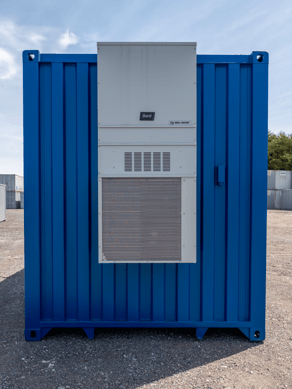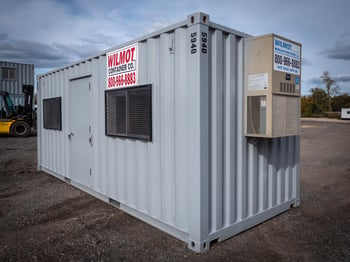
The popularity of using repurposed shipping containers to create commercial, industrial, and residential space is growing at a tremendous rate. We're seeing “pop-up” bars, retail stores, industrial data centers, and even homes being made out of modified shipping containers.
The idea of repurposing a container as a single unit, or using it as a component to construct a larger building, is an extension of both the lean and green movements. The surge of well-intentioned people who are repurposing shipping containers to extend their useful life, not to mention add a “coolness factor,” is attracting a lot of attention.
Growing Attention from Code Officials
A lot of this attention is coming from local building code officials who are scrambling to react to this growing trend. Many officials and organizations are well behind in creating and enforcing regulations and compliance for these “containerized buildings.” As a result, trade associations whose members are in the business of selling and leasing containers and other prefabricated buildings are getting heavily involved. These organizations and their entities have a lot of money riding on decisions made by regulatory agencies.
In recent months, The Modular Building Institute (MBI) and the National Portable Storage Association (NPSA) joined forces to propose a criterion for Code Officials to use for container structures. This criterion outlines the different applications for modified shipping containers and how they should be used in a safe manner.
Durable Solutions for a Variety of Applications

There are 34,000,000 ISO shipping containers in use around the world today. All are built to ISO Standards and maintained by the International Maritime Organization's (IMO) “Convention for Safe Containers” standards. Each box is capable of holding 55,000 pounds of goods and can be stacked nine high. They are all built to withstand harsh environments and vigorous use. The durability, safety (ground level access), and security (hard to break into) are all factors that attract industry users to utilize them for storage. But their use stretches far beyond storage; these traits are also the main drivers in utilizing them for other applications.
Containers are currently being repurposed and converted into residential, commercial and industrial facilities. As single units, the boxes are often retrofitted to become data centers or pop up stores/bars. They can also be found in rental fleets as portable offices and storage units. Multiple containers can be used as components and joined together to create a much larger facility, like an apartment complex, dormitory, or office building.
Building Regulations from the Ground Up
Until now, it’s been the “wild west” in many state jurisdictions for anyone using containers for something other than its originally intended purpose. State Administrators are quickly trying to catch up and control the situation with a patchwork of regulations. In some cases, those regulations are conflicting and have duplicative requirements.
-1.jpg?width=491&name=Containers%20%26%20More%20(7)-1.jpg) Modified Containers for Secure Storage
Modified Containers for Secure Storage
As a result, there is growing concern from companies operating in the portable storage and office market. Those companies, to date, have already made a substantial investment of $2-3 billion dollars for ISO containers and modifications of them into ground level offices (GLO) for their collective rental fleets. The decisions made by State Administrators is of critical interest to those investors and fleet owners.
Code Officials use the International Residential Code (IRC) for residential facilities and the International Building Code (IBC) for commercial uses as a guide to determine if a building’s specifications comply with all life and safety regulations. Modular building fleet owners, however, rely on the International Existing Building Code (IEBC) to secure their ability to continue renting the portable buildings in their fleets that don’t meet the most current building code.

The IEBC regulates existing buildings, defined as “a building erected prior to the date of adoption of the appropriate code or one for which a building permit has been issued.” As the MBI points out, while this definition provides a great deal of protection for a majority of relocatable building products, it does not sufficiently protect the ISO container units, primarily because those types of units have historically not been required to follow the permit process.
The International Code Council (ICC) recently published guidelines that offer an approval process for the use of containers in buildings, but it does not distinguish between larger permanent structures made from multiple containers and smaller ground level offices (GLO). It also doesn’t state whether the acceptance criterion applies “going forward” or to be applied to the thousands of existing GLO’s.
A Pivotal Time for All Stakeholders
A lot is riding on the final determinations and criterion to be used for the applications of repurposed ISO containers. The cost to repurpose containers could be drastically affected or, perhaps, the ability to even make modifications of containers for other applications may be eliminated. There could also be a potential loss of investments for industry members if current inventories are deemed obsolete as result of those decisions. Many stakeholders and industry participants are watching the ICC as they wade through the discussions, data, and industry-proposed guidelines.
Meanwhile, using repurposed ISO containers remains the newest and “sexiest” way to create building space. It may also be the most frustrating way as owners, architects and contractors deal with state building code officials who are unsure of how to handle them – but as one modular building dealer states, “where there’s a will, there’s a way!”








